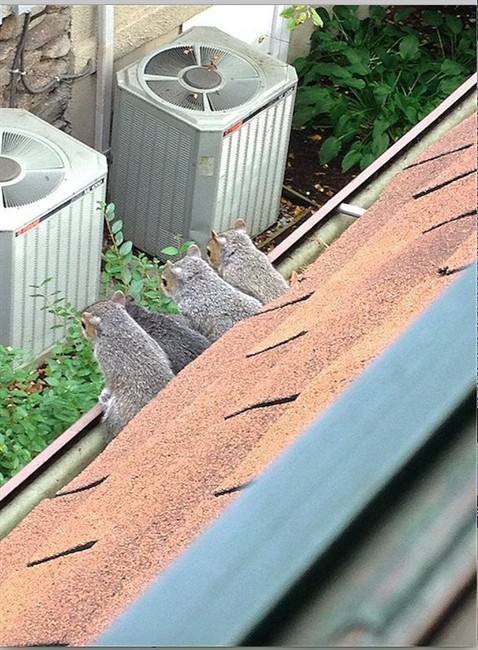As much as my family and I love to have suburban wildlife around our New York-area home, some of the cuteness wore off when we found rodents living under the roof.

A mama squirrel (perhaps she was expecting) had set up a cozy little nest in our attic — a wise move considering the temperature was dipping and she had a brood to care for. As Jack Murphy, co-founder of Denver-based Urban Wildlife Rescue, puts it: “They can live in a tree. And we can live all winter on the prairie in a tent. But having a house is a lot nicer.”
So my husband, Paul — a do-it-yourself kind of guy (and looking to save a grand or so on critter eviction) — sprang into action. Once the little tykes were old enough to go outside the nest on their own — cute as can be, peering over the eaves of our roof — he rigged up the trusty “have-a-heart” trap, relocating them to places you’d think squirrels would like. One got new digs creek-side in a forest preserve. Another was escorted to a wooded college campus.
But it was with heavy hearts we later learned that his efforts were more misguided than magnanimous. Experts say most squirrels — even ones old enough to fend for themselves — don’t survive being moved. They succumb to everything from turf wars to an inability to adapt to new habitats.
“Relocation is a feel-good myth,” Murphy says.
State and federal agencies discourage relocating wildlife, and in some cases ban it.
And removing a mother squirrel without her litter can also have a dreadful outcome, says Murphy. “Most of the calls we get about orphans are the results of humans doing something stupid,” he says.
Ugh.
Ned Bruha, who does business as The Skunk Whisperer in Oklahoma City, is another of the country’s few specialists in humane wildlife removal. He says the wiser move — in addition to leaving the job to the pros — would have been to let the squirrels hunker down until they were ready to leave the attic on their own, and then provide them a one-way door for doing so.
There’s no real risk in letting them hang out awhile, Bruha says; the danger of squirrels doing damage like chewing through wires is overblown. At the same time, when the animals do move outside they’re in familiar surroundings.
Without remedial and preventive repairs, however, you’ll likely have another tenant in no time, as there is no shortage of squirrels looking for a place to live.
“If you have squirrels in your attic, you do not have a squirrel problem. You have a house problem,” Bruha says. “And if you treat this as a building problem and not a wildlife problem, you are going to have longer-term results.”
READ MORE: What you need to know about mice in your home
Once the animals are definitely out, Bruha deodorizes their former home and its surroundings with an industrial-strength cleanser designed specifically to neutralize the odours that wildlife like squirrels leave behind, and that attracts others.
Next: Repair the areas the squirrels have been using to go in and out of your attic, and make sure they don’t create new entry points.
“What we don’t want them to do is walk out, walk around the corner and chew in on one of those other architectural features,” Bruha says.
Preventing that doesn’t require elaborate repairs, he says. Identify the spots that squirrels are likely to chew through — old attic screens and roof vents among others.
“There is no reason to make your house look like Fort Knox to keep them out forever,” Bruha says.
Both Bruha and Murphy stress the importance of working with an expert in humane wildlife removal, a small but growing sector of the business.
READ MORE: Taxidermist’s bizzare stuffed squirrel creations may shock you
On the brink of another squirrel birthing season (they have two litters a year), that’s on my To Do List.
I do, however, think fondly of those little guys scampering around the roof last year, and of watching them get their first taste of freedom and the big wide world.
I just hope they are doing well out there.

Comments